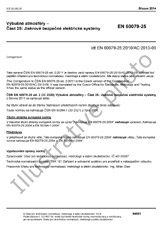We need your consent to use the individual data so that you can see information about your interests, among other things. Click "OK" to give your consent.

IEEE 1502-2020
IEEE Recommended Practice for Radar Cross-Section Test Procedures
Translate name
STANDARD published on 29.12.2020
The information about the standard:
Designation standards: IEEE 1502-2020
Publication date standards: 29.12.2020
SKU: NS-1012550
The number of pages: 78
Approximate weight : 234 g (0.52 lbs)
Country: International technical standard
Category: Technical standards IEEE
Annotation of standard text IEEE 1502-2020 :
Revision Standard - Active.
The process of the measurement of the radar cross section of objects using a test range is described in this recommended practice. The term radar cross section (RCS) is defined, and the characteristics of different types of test ranges are given. The responsibilities of the test range operators are shown to involve test and calibration of the measurement range systems and to take the measurements accurately. Techniques are described for each stage of this process.
ISBN: 978-1-5044-7108-4, 978-1-5044-7109-1
Number of Pages: 78
Product Code: STD24434, STDPD24434
Keywords: compact range, dynamic test range, elevated range, error, ground-plane range. IEEE 1502™, inverted-V range, near-field non-anechoic range, radar cross section (RCS), radar test range, RCS measurement, spherical-wave anechoic chamber, tapered chamber, uncertainty
Category: Antennas
We recommend:
Technical standards updating
Do you want to make sure you use only the valid technical standards?
We can offer you a solution which will provide you a monthly overview concerning the updating of standards which you use.
Would you like to know more? Look at this page.



 Cookies
Cookies
